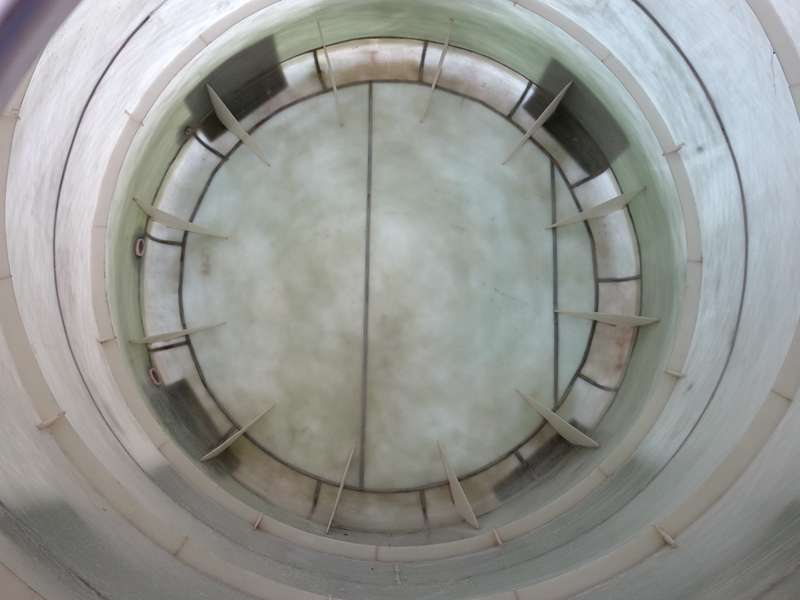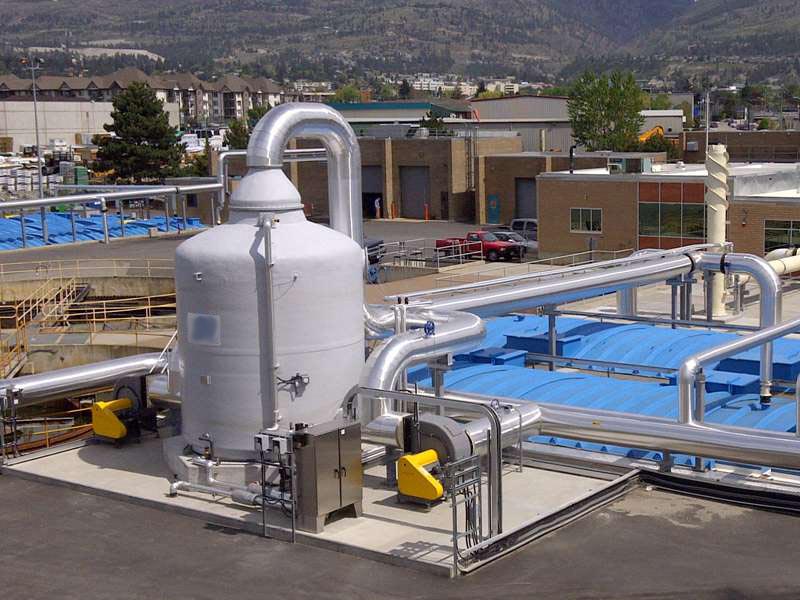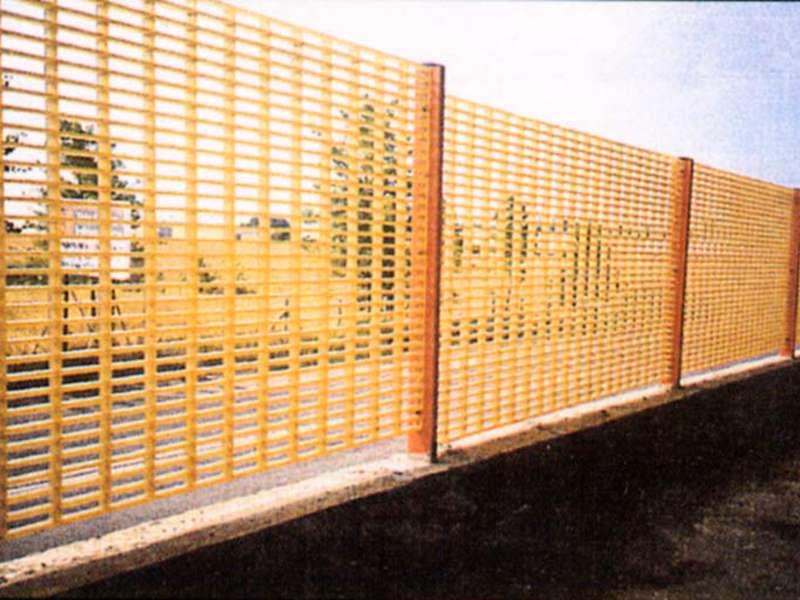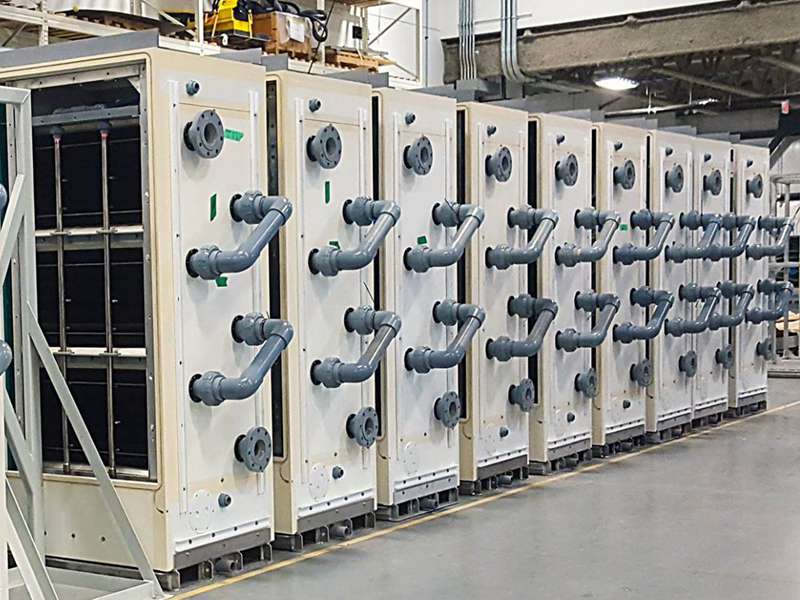Nadasig sa pagka-flexible ug pagkagahi sa natural nga spider silks webs, usa ka research team nga gipangulohan ni Prof. YU Shuhong gikan sa University of Science and Technology of China (USTC) nakamugna og usa ka yano ug kinatibuk-ang pamaagi sa paghimo og superelastic ug fatigue resistant hard carbon aerogels nga adunay nanofibrous network structure pinaagi sa paggamit sa resorcinol-formaldehyde resin isip hard carbon source.
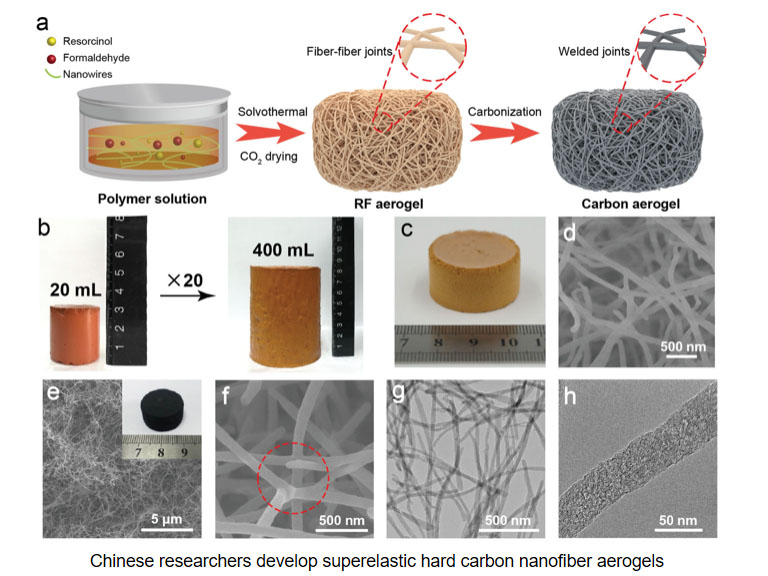
Sa bag-ohay nga mga dekada, ang mga carbon aerogels kaylap nga gisusi pinaagi sa paggamit sa mga graphitic nga carbon ug humok nga mga carbon, nga nagpakita sa mga bentaha sa superelasticity. Kini nga mga pagkamaunat-unat nga aerogel kasagaran adunay mga delikado nga microstructure nga adunay maayo nga pagbatok sa kakapoy apan kusog kaayo. Ang mga gahi nga carbon nagpakita og daghang mga bentaha sa mekanikal nga kusog ug kalig-on sa istruktura tungod sa sp3 C-induced turbostratic "house-of-cards" nga istruktura. Bisan pa, ang pagkagahi ug pagkahuyang klaro nga nakababag sa pagkab-ot sa superelasticity sa mga gahi nga carbon. Hangtod karon, hagit gihapon ang paghimo og superelastic hard carbon-based aerogels.
Ang polymerization sa resin monomers gisugdan sa presensya sa nanofibers isip structural templates aron sa pag-andam sa usa ka hydrogel nga adunay nanofibrous networks, gisundan sa pagpauga ug pyrolysis aron makakuha og hard carbon aerogel. Atol sa polymerization, ang mga monomer nagdeposito sa mga templates ug nagwelding sa fiber-fiber joints, nga nagbilin sa usa ka random network structure nga adunay dagkong lig-on nga mga lutahan. Dugang pa, ang pisikal nga mga kabtangan (sama sa mga diametro sa nanofiber, densidad sa aerogels, ug mekanikal nga mga kabtangan) mahimong kontrolahon pinaagi lamang sa pag-tune sa mga templates ug ang gidaghanon sa mga hilaw nga materyales.
Tungod sa gahi nga carbon nanofibers ug abunda nga welded joints sa mga nanofibers, ang hard carbon aerogels nagpakita sa lig-on ug stable nga mekanikal nga pasundayag, lakip na ang super-elasticity, taas nga kusog, hilabihan ka paspas nga recovery speed (860 mm s-1) ug ubos nga energy loss coefficient ( <0.16). Human masulayan ubos sa 50% nga strain sa 104 ka mga siklo, ang carbon airgel nagpakita lamang sa 2% nga plastic deformation, ug nagpabilin ang 93% nga orihinal nga stress.
Ang gahi nga carbon airgel makapadayon sa super-elasticity sa mapintas nga mga kondisyon, sama sa liquid nitrogen. Pinasukad sa makaiikag nga mekanikal nga mga kabtangan, kini nga gahi nga carbon airgel adunay saad sa paggamit sa mga sensor sa stress nga adunay taas nga kalig-on ug halapad nga hanay sa detective (50 KPa), ingon man mga stretchable o bendable conductor. Kini nga pamaagi adunay saad nga palapdan sa paghimo sa uban nga non-carbon based composite nanofibers ug naghatag usa ka maayong paagi sa pagbag-o sa mga gahi nga materyales ngadto sa pagkamaunat o flexible nga mga materyales pinaagi sa pagdesinyo sa nanofibrous microstructures.
Post time: Mar-13-2020
















































































































